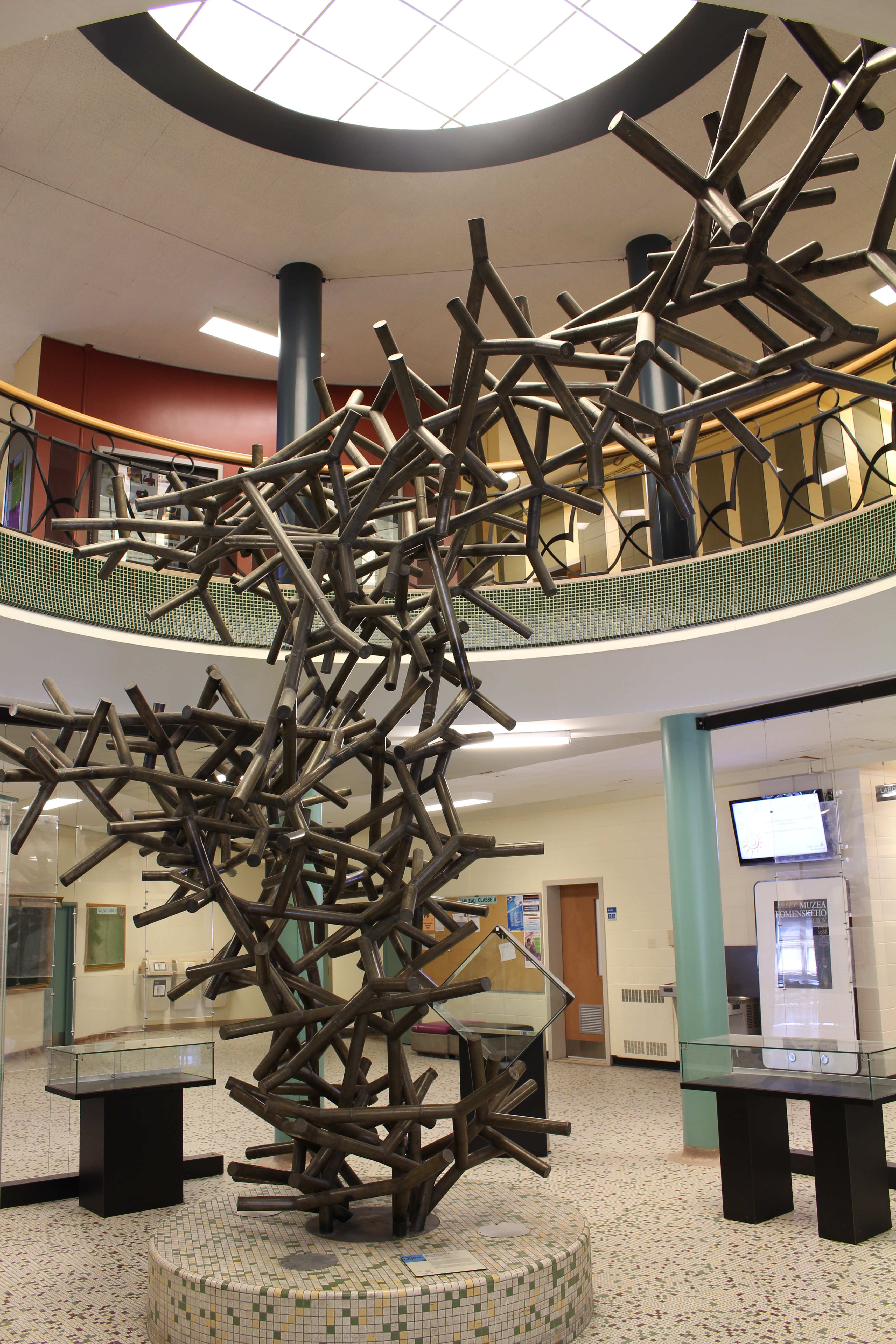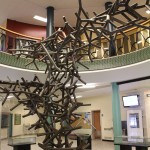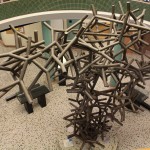

Johannes Burla was born in 1922 in Leipzig (Germany) and studied at the Schule für Gestaltung de Bâle (School of Applied Arts) from 1942 to 1946. He was a stonecutter and sculptor until 1956. He then became a teacher at the Schule für Gestaltung de Bâle. The same year, he participated in the Venice Biennale.
Aside from his job as a teacher, he created pieces for architects, for the general public and showcased in Bâle and in Zurich. In 1991, he was crowned champion of the Biennale and he created a commemorative gold coin to celebrate 700th anniversary of the Swiss Confederation. He spent most of his career in Switzerland.
Burla created many pieces for public display, be it in the context of an order or a collaboration with architects. He also did interior design, notably the entry hall to the University of Bâle’s library.

Artwork description
The sculpture represents the microscopic structure of a molecule that becomes abstract when reproduced in monumental dimensions. Like a real molecule composed of atoms bound by chemical bonds, the sculpture displays many tubular bronze sections welded to one another. The artist came to Montreal himself to install it.
The piece was ordered by Swiss chemical companies for the Swiss pavilion during Expo 67. The corporate sponsors and the Swiss government donated the piece to the Université de Montréal following the Expo.
Whatever materials Johannes Burla used for his sculptures, the pieces were always abstract and often minimalist with simple geometric shapes. The artist knows how to adapt shapes to the different materials’ inherent properties, whether he worked with stone, concrete, metal or bronze. He rarely adds any color to his pieces as he has a preference for raw materials. The colors he adds are pure and intense.



